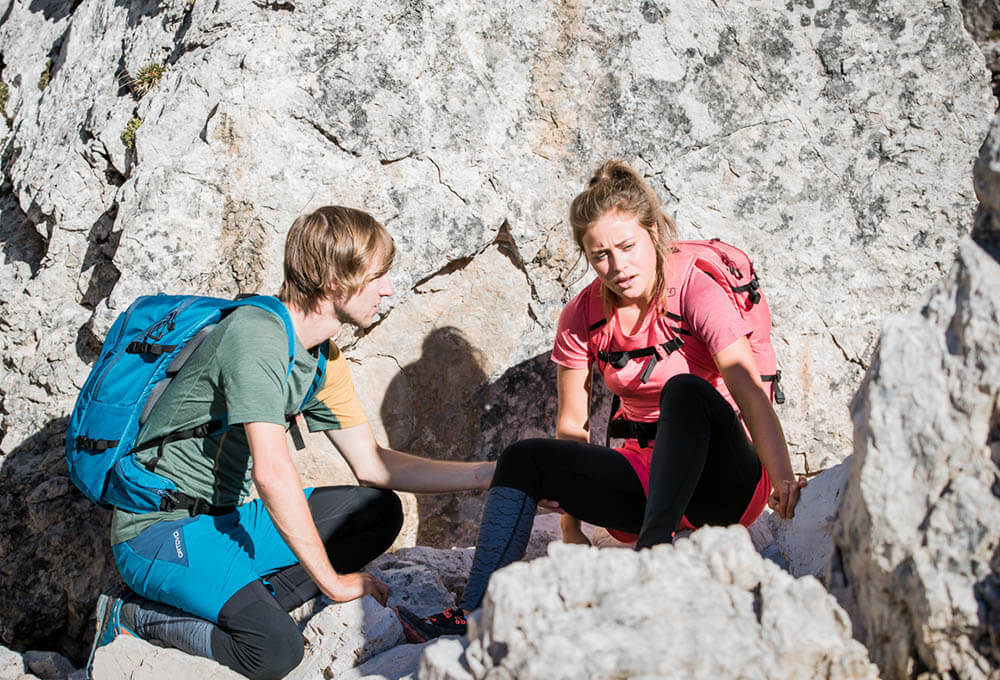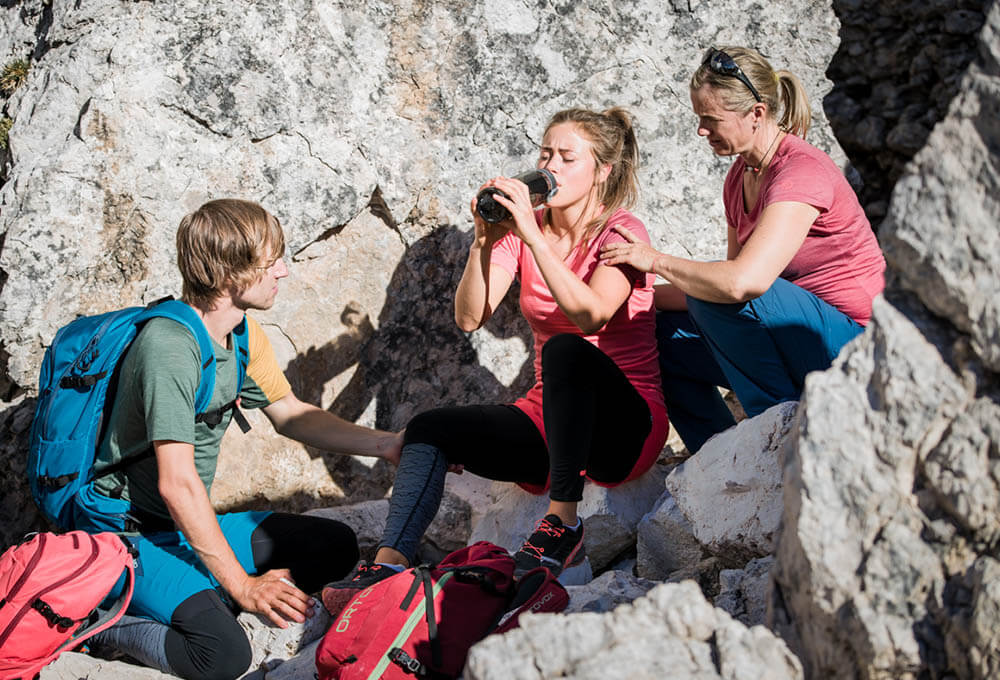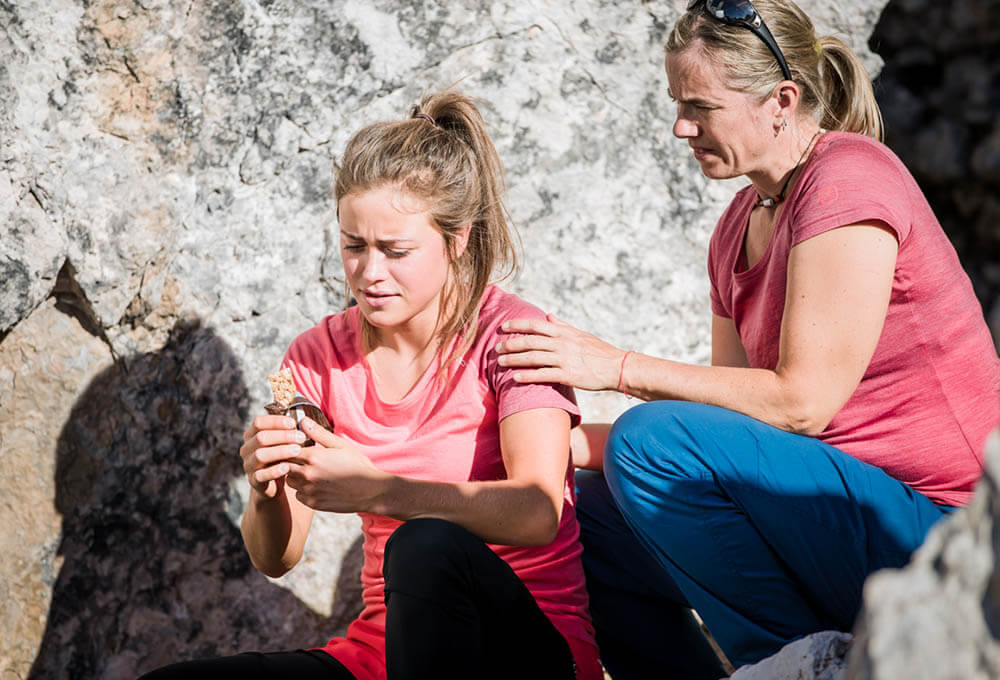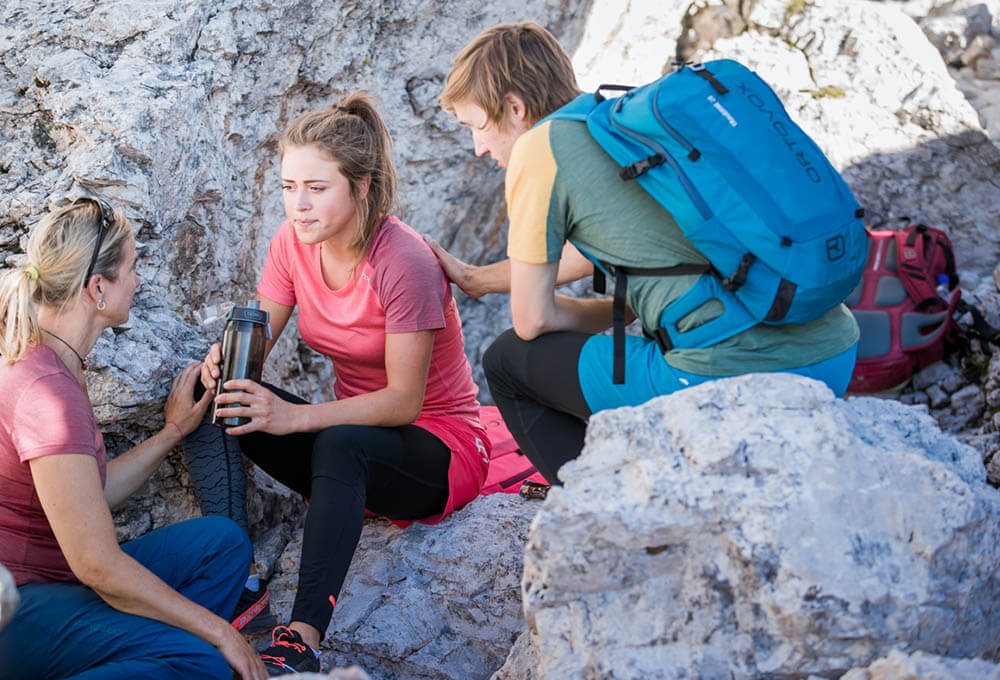Heat exhaustion
People often forget to drink enough fluids when climbing. Many climbers may carry only a small bottle or no liquids at all to keep weight to a minimum. On very hot days in particular, when fluids are lost through severe sweating or extreme physical exertion, this lack of fluid intake can result in heat exhaustion/dehydration.
Typical symptoms for heat exhaustion are paleness, severe weakness and a cold sweat with shivering. Later, additional symptoms may include a raised body temperature, muscle cramps, mental confusion or unconsciousness.

If you think someone is suffering from dehydration, the person affected should cease all physical exertion immediately. If possible, the person should seek shade and drink plenty of fluids, provided they can do this unaided.

Electrolytes should also be taken, for example in the form of granola bars, nuts or similar.

Once you have found shade, the person affected should rest and continue to take food and fluids.. If the shade suddenly seems cold, you may need to make sure the person stays warm.
An emergency call will be necessary if the situation does not improve or if the person begins to show severe symptoms, such as hallucinations or impaired consciousness.


